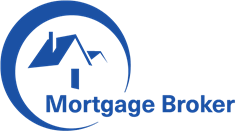Refinancing For Mortgage Payments
A simple definition of a mortgage, however, is a type of financial loan that you can apply to purchase a property with which to live. A mortgage is often a very good option for those who want to purchase their first home, but do not have all of the required funds available right away. However, there are also some instances in which it makes more sense to take out a mortgage for your house even if you already have the cash on hand to repay it. Mortgage rates are one example of this. Mortgage rates are always going up and down.
There are many different types of mortgage loans that exist, and they are broken down in several different ways. The most common form of mortgage loans is the fixed-rate mortgage. This is where the borrower pays the same amount each month for a certain amount of years. In return, the lender charges the borrower a certain amount of interest each year. If the borrower decides to refinance in the future, the lender will agree to adjust the interest rate and the amount of time that the loan is for.
Adjustable rate mortgages (ARM) are mortgages that are linked to the Bank of America’s (BAC) base rate. With an ARM, the lender may change the monthly payment at any given point throughout the life of the loan. However, the lender is not allowed to change the interest rate at any point. This type of mortgage has a lower monthly payment, but the interest rate and the term of the loan are usually much longer than a fixed-rate mortgage.
Both of these types of mortgage loans, however, have downsides. With fixed-rate mortgages, if the market rises, the lender must higher the interest rate in order to make up for the additional cost of the loan. On the other hand, with adjustable rate mortgages, if the market falls, the lender does not necessarily have to increase the mortgage payment, but instead can choose to discount the mortgage balance. With both types of mortgages, borrowers should be prepared to deal with the risk that either type of mortgage lender may decide to change the interest rate or the mortgage payment.
In addition, adjustable-rate mortgages often come with prepayment penalties, which are fees that borrowers are required to pay when they refinance or sell their home. Because adjustable-rate mortgages come with varying interest rates over time, borrowers will have to be prepared to deal with the additional costs associated with the prepayment penalty. Furthermore, many borrowers do not qualify for fixed-rate mortgages because of their bad credit. Because these loans come with more interest rates, they often come with larger down payments and require less collateral, so they are ideal for people who own their home and someone who cannot qualify for a fixed-rate mortgage.
Last, but certainly not least, fixed-rate mortgages are ideal for borrowers who wish to plan out the repayment of the loan. These mortgages lock in interest rates at a certain level, which eliminates the need to keep tabs on changing interest rates. The payments are also typically lower than those of adjustable-rate mortgages. Fixed rate mortgages also provide the convenience of having your loan amount set at a particular amount, which is usually a combination of cash down payment and loan interest. Finally, because the loan is fixed, the borrower does not have to worry about experiencing a sudden rise in interest rates due to market fluctuations.
